Impact of Imaging Techniques on Poa Annua Management
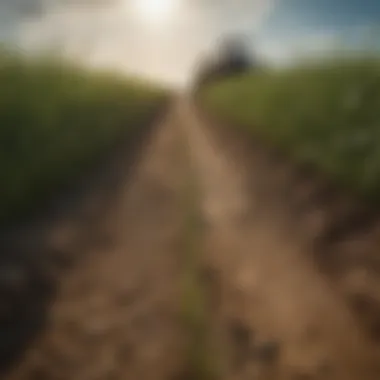

Intro
Poa annua, commonly called annual bluegrass, is a weed that every farmer or gardener has encountered at one point, often with frustration. This adaptable species can thrive in various conditions, making it a persistent problem in both agricultural and horticultural environments. Throughout the years, several control methods have been employed, ranging from herbicides to manual removal, but the challenge remains a hill to climb. However, recent advancements in image techniques present new avenues to tackle this widespread issue effectively.
This exploration into imaging technologies aims to illuminate not just the role these methods play in weed management but also their significance in the bigger picture of agricultural sustainability. As farming practices evolve, understanding these innovative solutions becomes critical for anyone looking to maintain healthy crops while keeping invasive species like Poa annua at bay.
Overview of the Topic
Definition and Importance
Poa annua is a small, fast-growing grass that often appears in lawns, fields, and gardens. It's a tough old bird, able to adapt to a variety of climates and soils, which has made it a serious pain for those cultivating crops. Understanding its growth patterns, reproductive habits, and environmental preferences is essential to effectively manage its populations.
Imaging techniques utilize various technologies, like aerial photography, thermal imaging, and multispectral sensors, to assess plant health and competition levels in the field. These methods can identify Poa annua’s presence much sooner than traditional methods, providing farmers with a window of opportunity to act before the weed becomes a larger issue.
Current Trends
The agricultural world is buzzing about precision farming, an approach that employs technology for enhanced efficiency. Imaging techniques fall right into this category. Today, drones equipped with advanced cameras are flying over fields, capturing high-resolution images that reveal weed growth patterns. Farmers no longer have to wait for the Wed to take a visible toll on their crops; technology now alerts them to potential problems ahead of time.
This push towards technology-driven solutions is not simply about convenience, but sustainability as well. Image techniques minimize the use of chemical herbicides, promoting a healthier environment and ultimately leading to more sustainable farming practices.
Key Techniques and Practices
Step-by-Step Guide
- Choose the Right Imaging Technology: Consider the scale of your field and the nature of Poa annua infestation. Drones? Satellite imagery? Ground-based sensors? Each method has its pros and cons.
- Identify Growth Patterns: Once the imaging process begins, analyze the collected data for patterns of Poa annua growth. Look for hotspots where this weed disproportionately thrives.
- Integrate Findings into Management Practices: Use this data to tailor your weed management strategy. Focus your control efforts on high-density areas, which can save both time and resources.
- Monitor and Adjust: After implementing control measures, continuously monitor the field using imaging techniques to inform subsequent interventions. Keep refining your approach based on real-time data.
Tools and Equipment Needed
- Drones: Equipped with high-resolution cameras for aerial imagery.
- Software: GIS (Geographic Information System) tools for data analysis.
- Multispectral Sensors: To detect different wavelengths of light, helping to differentiate between the crops and Poa annua.
- Data Analytics Platform: For processing and interpreting the vast amounts of data collected.
Challenges and Solutions
Common Obstacles
Working with imaging techniques is not without its bumps in the road. High costs of equipment can deter many farmers, especially those with smaller operations. Also, understanding how to interpret data effectively remains a challenge for many. Additionally, technical malfunctions or environmental conditions can hamper imaging efforts, leading to less reliable data.
Innovative Solutions
To address these challenges, consider:
- Collaborative Purchasing: Smaller farms might band together to acquire shared imaging equipment.
- Training Programs: Investing in training for staff to handle the technology and interpret data can pay off in the long run.
- Open Source Software: Utilize cost-effective data analysis tools available in the public domain to lower expenses.
The landscape of Poa annua management is shifting, thanks to emerging imaging technologies. By embracing these innovative methods and developing strategies tailored to their own circumstances, farmers can gain a significant edge in controlling this invasive weed. The marriage of technology and agriculture will not only challenge long-standing issues but also propel farming practices toward a more sustainable future.
Understanding Poa Annua
To tackle the persistent challenge posed by Poa annua, an understanding of its intricate characteristics holds paramount significance. This section aims to shed light on the biological traits, ecological ramifications, and economic impacts of this species, surrounding a comprehensive narrative that aligns with contemporary agricultural practices. A deep grasp of Poa annua doesn’t just assist in managing it but also facilitates developing broader strategies to bolster sustainable agricultural frameworks, thereby improving yield and health of crops.
Botanical Characteristics
Poa annua, commonly known as annual bluegrass, is an intriguing weed that often becomes a thorn in the side of growers. As a cool-season grass, it germinates in the fall or early spring, capitalizing on cooler temperatures. Its structure is distinct; it possesses a tufted growth habit, creating dense mats that can choke out more desirable vegetation. The leaves are typically light green, narrow, and can be smooth or slightly hairy.
One notable feature is its ability to produce a multitude of seeds—often exceeding 100,000 seeds per plant. This prolific reproduction imbues Poa annua with an adaptability that allows it to flourish in diverse environments, from golf courses to agricultural fields and beyond. Understanding these botanical nuances is crucial.
Ecological Impact
The ecological impact of Poa annua can be likened to a double-edged sword. On one hand, it certainly cannot be labeled as a friend of the farm. It outcompetes native species and crops for resources like sunlight, water, and nutrients, often leading to reduced biodiversity in ecosystems. Its rapid spread can also create monocultures, destabilizing soil quality and leading to increased soil erosion.
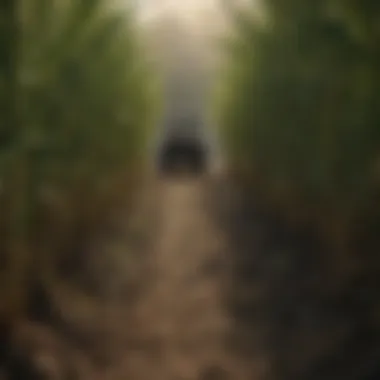
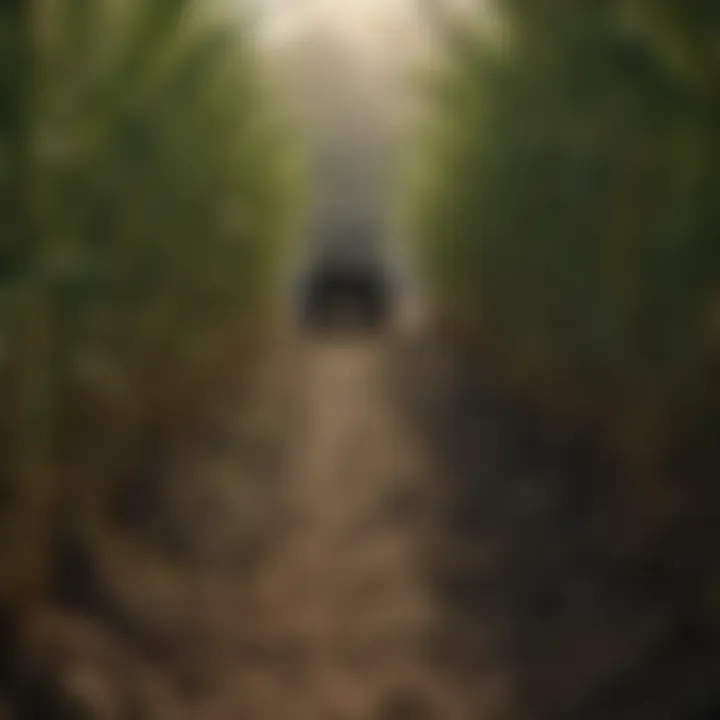
On the other hand, Poa annua does hold its ground in some ecosystems, often providing temporary ground cover when more beneficial plants may not be present. This adaptability means it can offer some ecological benefits until better-suited plants establish themselves. Recognizing these aspects is vital for forming a balanced view on how Poa annua influences local biodiversity and agricultural productivity.
Economic Considerations
From an economic standpoint, the presence of Poa annua in crop fields can be more than just a nuisance; it can vastly affect the bottom line. Farmers often find themselves resorting to several control methods, which may include herbicides, manual weeding, or altered agronomic practices. Each of these approaches carries its own associated costs, time commitments, and efficacy.
"The fight against Poa annua is not just about eliminating a weed; it's about safeguarding livelihoods and investing in sustainable farming practices."
Moreover, in situations where Poa annua becomes tenacious, the expenses skyrocket, impacting overall profitability. The less visible costs, such as loss of crop yield or long-term soil depletion, can stymie agricultural operations. For farmers and agricultural professionals, understanding the economic implications of managing Poa annua is imperative. Their strategies must integrate efficient weed management techniques that minimize losses while adhering to ecological balance.
By unpacking these botanical, ecological, and economic facets of Poa annua, we pave the way for more informed and effective management strategies that can be tailored to fit individual and community needs. Each aspect contributes essential knowledge aimed at fostering a sustainable approach to weed control.
The Importance of Weed Management
Weed management is not simply a matter of aesthetics or convenience; it is a crucial aspect of effective agricultural practices. Understanding the pressing need for comprehensive weed management stems from the various challenges posed by aggressive weeds like Poa annua. This weed is notorious for its rapid growth and resilience, wreaking havoc on both crops and resources. Therefore, farmers must be proactive, embracing innovative solutions that go beyond traditional methods.
Challenges in Agriculture
Poa annua is a prime example of the challenges that farmers face in maintaining healthy crops. This cool-season weed can emerge in various environments, from turfgrass to agricultural fields. Its prolific nature means that, if left unchecked, it can outcompete desired plants for sunlight, water, and nutrients. Some of the significant challenges include:
- Resource Depletion: As Poa annua proliferates, it absorbs vital nutrients, leading to stunted crop growth and reduced yields.
- Increased Management Costs: The need for herbicides and other intervention strategies can inflate operational costs, affecting profit margins.
- Soil Health Decline: Intensive weed control methods often disturb soil ecosystems, leading to long-term degradation.
Moreover, weather patterns play a role; for instance, in wetter years, Poa annua can take hold faster, causing more significant setbacks in crop management. These challenges underscore why effective weed management is imperative for sustainable farming practices.
Management Strategies
To counteract the impressive tenacity of Poa annua, farmers must employ a range of management strategies that integrate new technologies with established techniques. Some effective management strategies include:
- Cultural Practices: Proper mowing, fertilization, and irrigation schedules can help give crops a competitive edge against weeds. For example, growing thicker grass can shade out Poa annua.
- Integrated Pest Management (IPM): This holistic approach combines different strategies, including biological controls, mechanical removal, and chemical interventions, to manage weed populations effectively.
- Image Techniques for Monitoring: Utilizing advanced imaging technologies such as drone imaging and satellite imagery can offer real-time data, allowing producers to act quickly when Poa annua shows signs of encroachment.
"Weed management is not just a task, it's an ongoing battle for crop health and productivity."
By adopting these diverse strategies, agricultural practitioners not only improve efficiency, but they also pave the way for more sustainable farming practices. The importance of sound weed management can’t be overstated; it forms the bedrock of successful agriculture, contributing not just to yield, but to the resilience of farming systems facing environmental changes.
Preamble to Image Techniques
The rise of technology in agriculture gives birth to innovative strategies that reshape traditional practices. One critical area of focus is how image techniques help control Poa annua, a persistent weed that challenges crop health and productivity. Image techniques include various imaging technologies that aren't just mere fancy gadgets; they serve as powerful tools for precise weed management, leading to healthier ecosystems in farming.
Understanding these techniques goes beyond just knowing how to operate fancy machinery; it encompasses learning their potential applications, benefits, and the unique insights they provide to the agricultural sector.
With various options available, such as remote sensing, drone imaging, and satellite imagery, farmers and agronomists alike can take advantage of real-time data that informs decision-making processes. These innovations can help detect early signs of infestation, track the spread of Poa annua, and apply targeted treatments effectively.
The integration of imaging techniques allows for a previously unheard-of level of detail and efficiency in weed management. The significance of these technologies becomes clear when one considers their role in helping farms reduce reliance on chemical interventions, benefiting both the environment and the economic viability of agricultural practices.
Types of Imaging Technologies
- Remote Sensing
Remote sensing is a particularly intriguing aspect of agricultural technology that involves collecting data from a distance, often using satellites or airborne sensors. This technique shines when it comes to monitoring large areas of farmland efficiently. Its rich capability to provide data over vast landscapes makes it a sought-after option for identifying Poa annua infestations. One key characteristic of remote sensing is its ability to gather multispectral data, allowing for differentiation between plant types and health status.However, while remote sensing offers a broad reach, it’s not without limitations. A notable disadvantage is its reliance on atmospheric conditions; cloudy or rainy weather can severely hinder data collection. Moreover, the data can sometimes be too general and not pinpoint enough for site-specific recommendations. - Drone Imaging
Drone imaging has connected operational efficiency with hands-on monitoring, making it a precious asset in agriculture. Drones equipped with high-resolution cameras can provide bird's-eye views of crops, offering insights into the health of plants. Drone imaging enables users to fly low and capture detailed images, thus facilitating identifying smaller infestations of Poa annua.Unique features of drone imaging include its flexibility and quick deployment. Farmers can set drones to collect data on-demand, providing immediate insights that can inform rapid decision-making. However, drones can face challenges such as battery limitations and the need for specific operator certifications, which might pose barriers for some users. - Satellite Imagery
Satellite imagery is the broad-brush painter of the imaging world in agriculture. It allows for scalable monitoring of extensive agricultural regions, making it invaluable for both large-scale farms and governmental agricultural assessments. The primary advantage of satellite imagery lies in its ability to capture consistent and repeatable observations over time, providing critical data points that can be analysed for trends in the spread of Poa annua and other weed species.But, just like other technologies, satellite imagery has its flaws. The resolution can be too coarse to detect small infestations, and the time delay between image captures can hamper timely responses to outbreaks. Yet, when used in conjunction with other techniques, the holistic data visualization that satellite imagery provides can offer strong support for well-informed management strategies.
Fundamentals of Image Analysis
While having the tools is essential, knowing how to interpret the data they provide is equally important. Image analysis involves processing and analyzing the images captured by these technologies, turning raw data into actionable insights. Using sophisticated software, users can classify areas affected by Poa annua and determine the most effective management strategies.
Effective weed management often relies on the merger of various imaging technologies, enhancing both the precision and efficiency of agricultural practices.
Mechanisms of Image-Based Control
The advent of modern imaging technologies has revolutionized the ways in which we manage invasive species like Poa annua. By integrating various imaging techniques into the control strategies, we gain a more nuanced understanding of these weeds.
One significant merit here is the capability of these techniques to enhance decision-making processes in agriculture. Getting a precise read on Poa annua infestations not only helps in early interventions but also contributes to more strategic allocations of resources.
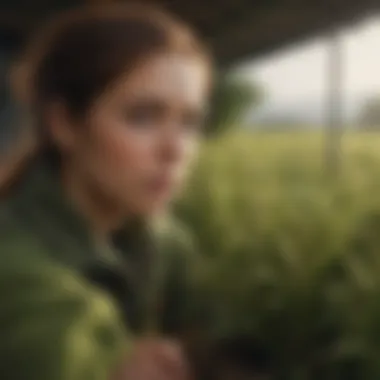

Early Detection of Poa Annua
Early detection is critical in combating the spread of Poa annua. Imaging technologies, such as drone imaging and remote sensing, can detect this weed during its initial stages, often before it becomes visible to the naked eye.
This timely information allows farmers to respond quickly, reducing the need for aggressive treatment later on. For example, by using multispectral imagery, farmers can identify variations in plant health, which often signals the presence of Poa annua. Early detection wasn’t possible in the past, leading to severe infestations before any action was taken.
Key Points on Early Detection:
- Offers a window for timely intervention.
- Reduces environmental impact by targeting specific areas.
- Provides critical data for developing long-term control strategies.
“Identifying Poa annua in its infancy gives farmers the upper hand, almost like catching a thief before they even make a move.”
Monitoring and Mapping Infestations
Monitoring comes next in the sequence. Continuous tracking of Poa annua growth through image analysis ensures that infestations are mapped accurately over time. By utilizing imagery from satellites or drones, farmers can maintain a bird’s-eye view of their fields.
These mapping techniques facilitate informed decision-making regarding resource allocation. For example, if an area of the field is consistently showing high levels of Poa annua, targeted treatments can be deployed rather than blanket applications of herbicides. This not only saves on input costs but also helps in promoting sustainability.
Advantages of Monitoring:
- Establishes a trend for weed growth over seasons.
- Highlights areas requiring immediate attention.
- Allows for better resource management, minimizing waste.
Precision Application of Treatments
Precision application of treatments is the next significant layer in the mechanisms of image-based control. This is where imaging can really shine. Rather than applying herbicides uniformly across a field, farmers can use imaging data to narrow down specific areas where Poa annua thrives.
For example, a farmer could use targeted spraying systems that utilize data from drone surveillance. This results in a more efficient use of herbicides, significantly reducing environmental footprints while maximizing the efficacy of the treatment.
Benefits of Precision Application:
- Minimizes chemical use, which is better for the environment.
- Reduces costs associated with over-application of treatments.
- Increases effectiveness by directly targeting problem areas.
In combining these mechanisms — early detection, diligent monitoring, and precision treatments — we can develop a more effective control strategy against Poa annua, leading to healthier crops and more sustainable farming practices overall.
Case Studies and Practical Applications
The application of image techniques in managing Poa annua is not just theoretical; many successful case studies highlight their practical advantages. Exploring the real-world use of these technologies provides critical insights into their benefits, effectiveness, and considerations that agricultural practitioners must account for. Integrating imaging methods into weed management strategies can significantly elevate the efficacy of interventions, making them indispensable tools for modern farming.
Successful Implementations
Successful implementations of imaging techniques in the control of Poa annua showcase how innovation meets agriculture. One notable example comes from a large turf management company that adopted drone imaging to identify and quantify Poa annua infestations in golf courses. By utilizing high-resolution aerial imagery, the team was able to pinpoint areas heavily affected by the weed with remarkable precision. This targeted insight allowed them to deploy herbicides more effectively, reducing chemical usage and optimizing treatment timings.
In another instance, a vineyard in California utilized satellite imagery to monitor Poa annua across vast areas. By analyzing spectral data, the vineyard managers could assess the weed's spread over time. This intelligence enabled them to implement localized control measures, leading to a dramatic drop in herbicide costs and promoting a more sustainable farming approach. These case studies exemplify how, with the right imaging tools, farmers can strike a balance between effective weed control and environmental responsibility.
Comparative Analyses
When considering the practical applications of imaging techniques, comparative analyses provide crucial understanding. Different imaging technologies vary in terms of effectiveness, cost, and usability. For instance, drone imaging often has a higher initial cost but offers detailed real-time data. Satellite imagery, while broader in scope, might miss localized infestations unless followed up with supplementary methods like ground surveys.
- Drone Imaging:
- Satellite Imagery:
- Pros: High detail; Real-time data availability; Ability to cover difficult terrains.
- Cons: Higher initial investment; Requires skilled operators.
- Pros: Covers large areas; Less affected by weather conditions; Useful for long-term vegetation monitoring.
- Cons: Lower resolution; Potential delays in data availability.
Balancing the strengths and weaknesses of these technologies ensures farming operations are tailored to local contexts and particular needs. A careful consideration of economic factors alongside imaging capabilities can greatly impact the overall success of weed management strategies, especially when dealing with resilient species like Poa annua.
"Effective weed management is a dance between technology and nature; understanding how to deploy these resources makes all the difference."
By studying these case examples, we see that proper application of imaging techniques not only enhances weed control efforts but also encourages sustainable farming practices. As the agriculture sector continues to evolve, embracing such technologies becomes essential for addressing both present and future challenges.
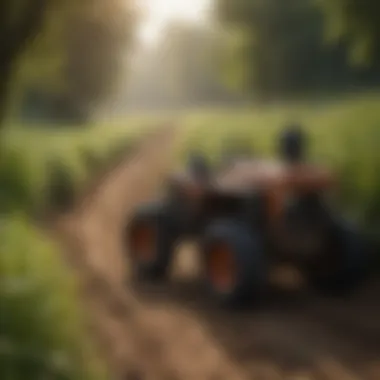

Limitations and Considerations
Understanding the limitations and considerations surrounding image techniques in the management of Poa annua is crucial for both researchers and practitioners in agriculture. While technology can offer remarkable enhancements to weed control efforts, it's not a silver bullet. These limitations shed light on areas where caution is needed and underscore the necessity for comprehensive strategies that integrate various management practices.
Technical Limitations
Image-based techniques, while powerful, come with their own set of challenges. First off, the resolution and quality of images can vary significantly depending on the technology used. For example, drones equipped with low-quality cameras might struggle to differentiate Poa annua from various grass species if they’re not captured in optimal conditions. The analysis of these images often requires sophisticated algorithms that are not universally accessible, which limits their usage. Here are a few key points highlighting these technical limitations:
- Dependence on Weather Conditions: Bad weather, such as overcast skies or heavy rain, can hinder the efficacy of imaging technologies. These conditions may obstruct visibility and reduce image clarity, impacting detection capabilities.
- Cost of High-End Equipment: High-resolution satellite imagery and advanced drones can be prohibitively expensive for some farmers. Budget constraints may result in reliance on subpar technology that does not deliver effective results.
- Data Overload: Even when high-quality images are obtained, the sheer volume of data can overwhelm users who are not tech-savvy. For farmers accustomed to traditional methods, interpreting complex data can feel like learning a new language.
Realizing these limitations helps practitioners strategize more effectively, combining technological advancements with traditional methods to enhance outcomes.
Environmental Considerations
The integration of imaging technologies also raises environmental considerations that must not be overlooked. For instance, the impact of drone operations on local wildlife and ecosystems can be significant. Here are a few areas to ponder:
- Disturbance to Wildlife: Drones flying over agricultural lands may disrupt local fauna, especially nesting birds. The noise and presence of drones can lead to stress in wildlife populations.
- Chemical Runoff from Treatments: Precision applications of treatments based on imaging data can lead to over-reliance on chemicals, which may result in runoff and contamination of nearby water bodies. Maintaining a balance between tech usage and sustainable practices is vital.
- Energy Consumption: The energy required to power advanced imaging equipment and data processing can contribute to a larger carbon footprint. Consideration of renewable energy sources may alleviate this impact.
Ultimately, these environmental factors should guide the adoption of imaging technologies, driving the need for a balanced, integrated approach to weed management that prioritizes both effectiveness and ecological integrity.
It's important to remember that while technology can augment traditional methods, it should not replace them. A thoughtful blend of old and new strategies often yields the best results for controlling Poa annua effectively.
By understanding these limitations and environmental considerations, farmers can make informed decisions that not only leverage the benefits of imaging techniques but also safeguard the ecosystems they rely on.
Future Directions in Weed Management
The field of weed management is rapidly evolving, and staying ahead of the curve is essential for farmers and agricultural enthusiasts. Investing in future directions not only enhances the efficacy of controlling Poa annua but also contributes to broader agricultural sustainability. The importance of focusing on future methodologies can’t be overstated. As new challenges arise, integrating innovative solutions becomes imperative.
Innovation in Imaging Technologies
The realm of imaging technologies is ever-changing. Innovations in this sector are paving the way for better monitoring and control strategies for weeds, including Poa annua. A few notable advancements include:
- Hyperspectral Imaging: This method captures a wide range of wavelengths to identify specific plant species, allowing for early detection of Poa annua among crops. It’s akin to having a magnifying glass that reveals details invisible to the naked eye.
- Artificial Intelligence Integration: With AI, image analytics can become more nuanced, offering predictive insights on weed infestations. This means farmers can proactively address problems before they escalate.
- Mobile Applications: These allow quick access to imaging data, enabling on-the-spot decision-making for weed treatment. By empowering farmers with real-time information, the overall process of weed management becomes more dynamic.
A careful blend of these technologies can revolutionize how we approach Poa annua control, leading to more precise interventions and better resource allocation.
Integrated Pest Management Strategies
Weed management isn't solely about controlling the plants; it's about creating a balanced ecosystem within agricultural environments. Integrated Pest Management (IPM) strategies play a critical role in this equation. Here are key components:
- Cultural Controls: Adopting practices such as crop rotation and cover cropping can disrupt the lifecycle of Poa annua, making it less likely for infestations to take hold.
- Biological Controls: Introducing natural predators or competitors of Poa annua can help maintain its population at manageable levels. This method emphasizes harmony with nature rather than dependence on chemicals.
- Chemical Treatments: When necessary, combining targeted herbicide application with imaging techniques allows for precision. This reduces the chance of unintended damage to desirable plants while effectively tackling the weed problem.
IPM strategies are about finding the sweet spot between various control methods. By carefully planning and implementing them, farmers can reduce reliance on a single approach, thereby increasing their resilience against Poa annua and other invasive species.
The future of weed management lies in the confluence of technology and strategic ecological practices. The adoption of innovative imaging techniques alongside integrated pest management can propel agricultural efficiency to new heights.
End
In the realm of modern agriculture, the integration of image techniques into the management of Poa annua is not just a trend; it's a necessity. Farmers grappling with this opportunistic weed can find solace in the innovative methodologies discussed throughout the article. Embracing these imaging advancements can facilitate proactive measures to control Poa annua effectively, translating into tangible benefits for both crop yield and environmental sustainability.
Summary of Findings
The examination of image techniques has revealed several key insights:
- Early Detection: Imaging technologies allow for the identification of Poa annua at its initial stages, enabling timely interventions. Traditional manual scouting simply cannot match this precision.
- Monitoring: Regular monitoring through sophisticated imaging systems leads to better mapping of weed infestations. This helps in maintaining knowledge of the weed population dynamics over time.
- Targeted Treatments: The ability to apply herbicides more precisely reduces the chances of unnecessary chemical use, thus supporting eco-friendlier farming practices.
Through these findings, it's clear that the synergy between technology and traditional methods opens new avenues for effective weed management.
Implications for the Agricultural Sector
The impact of these advances in imaging techniques ripples through the agricultural sector:
- Resource Efficiency: By reducing the need for broad-spectrum herbicides, farmers can conserve resources and cut costs.
- Sustainability: More precise control equates to less environmental impact, aligning with the growing demand for sustainable farming practices.
- Data-Driven Decisions: The data collected via imaging can assist in making informed decisions, turning instinctual choices into strategic actions.
Investment in these technologies isn't just about weed control; it's about embracing a future where farming practices evolve. Farmers and agricultural enthusiasts alike must adapt to incorporate these techniques, ensuring that they remain one step ahead in the ongoing battle against Poa annua.



